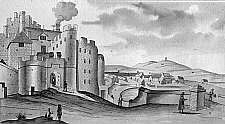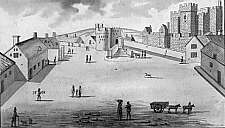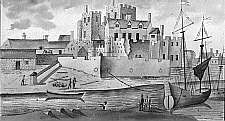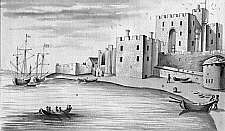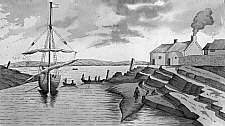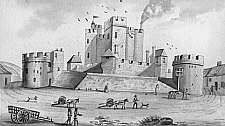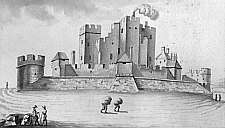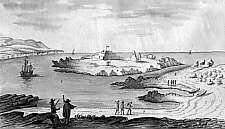A The way into ye Castle B The gate of the Castle. C The round towers of the counterscarpe D The wall of the Castle. E The new buildings nth in the Castle. F The towne nth in the Castle. G The New Worke. H The way to the Burne, I The Burne, K The Sand. L The houses of the towne. M Barroole.
